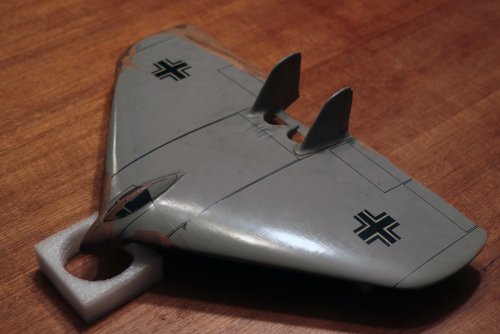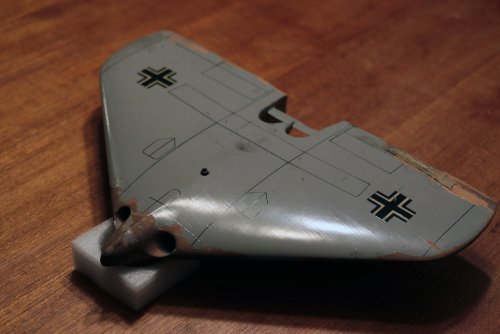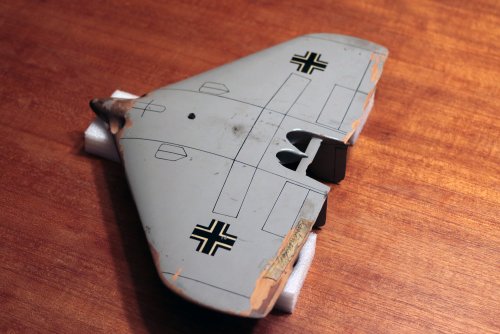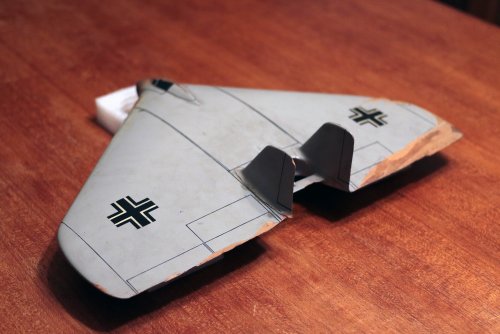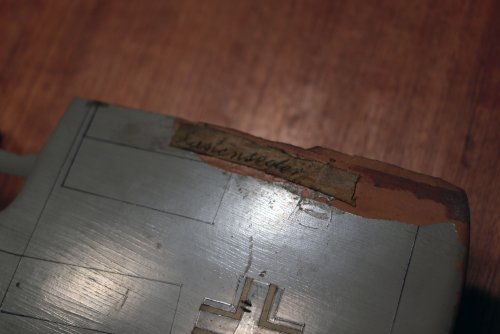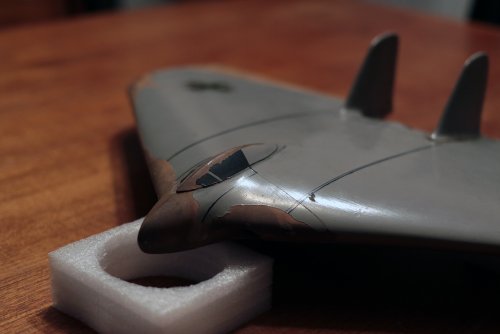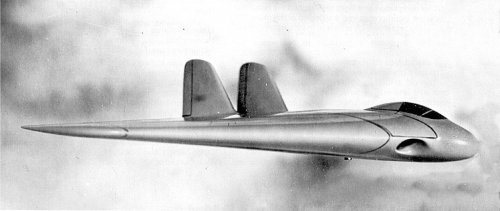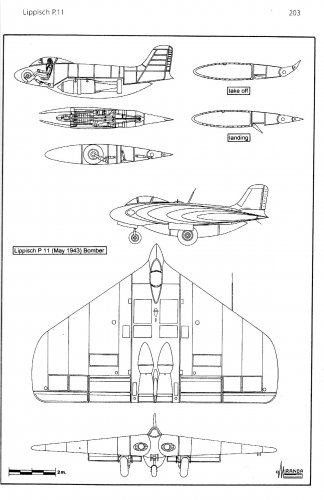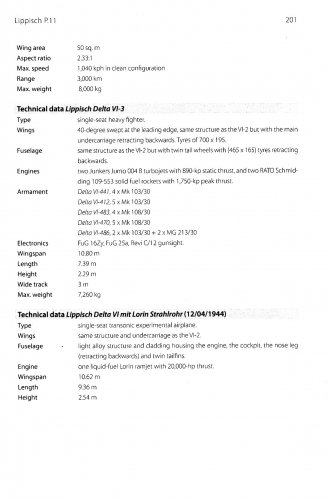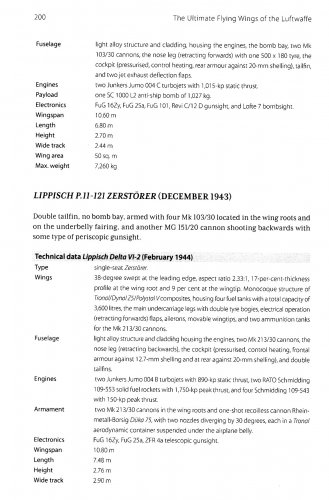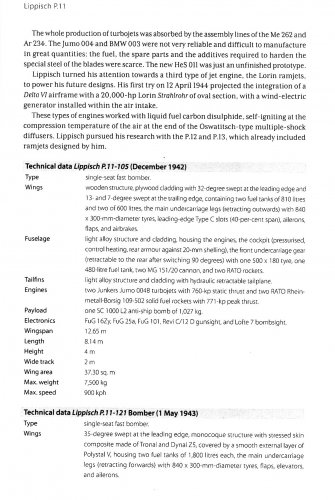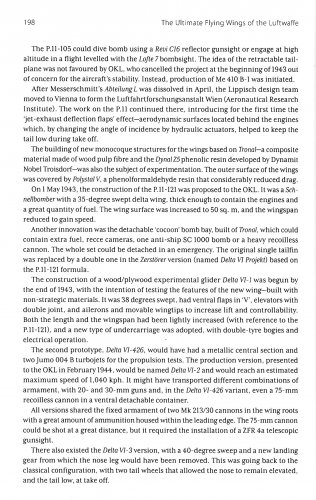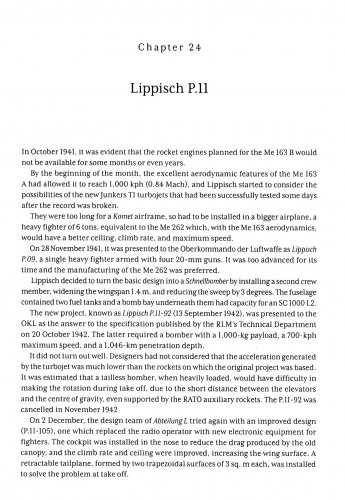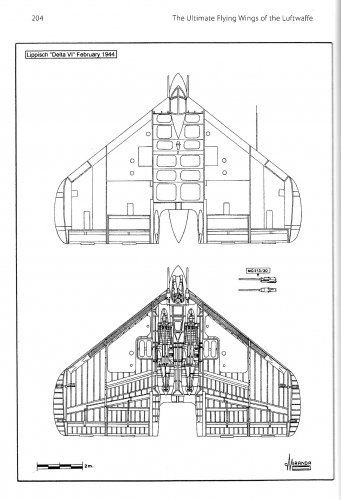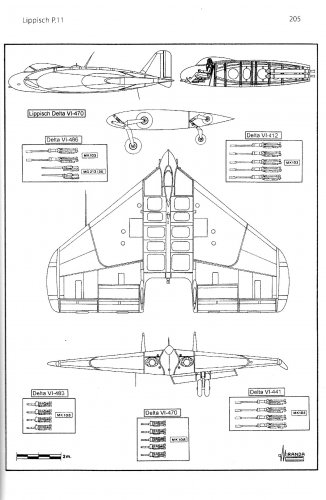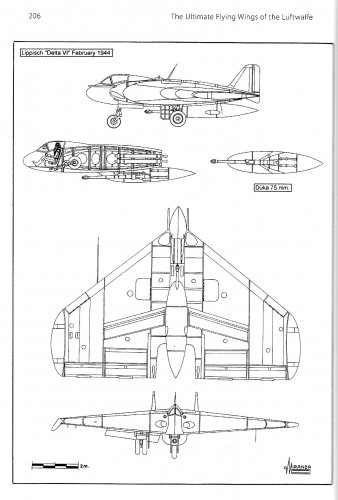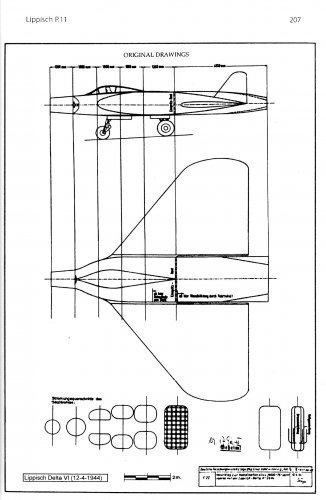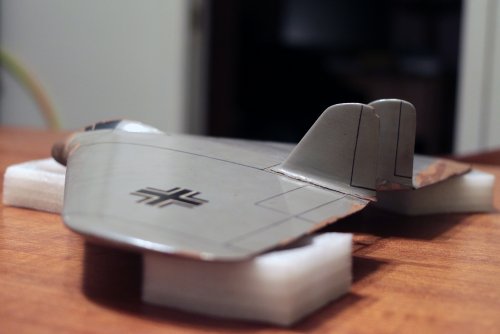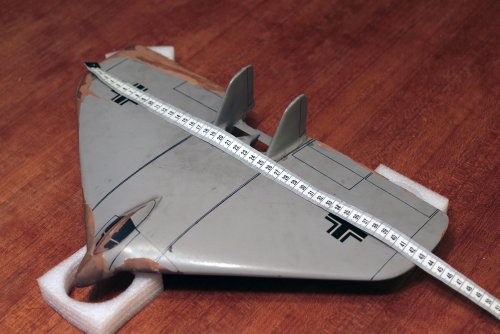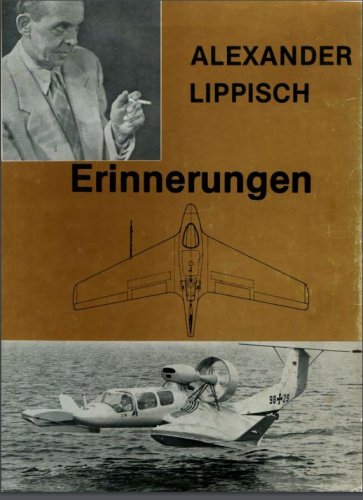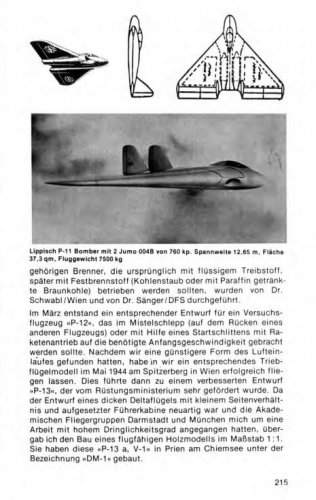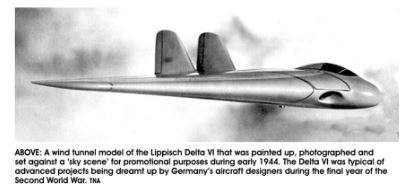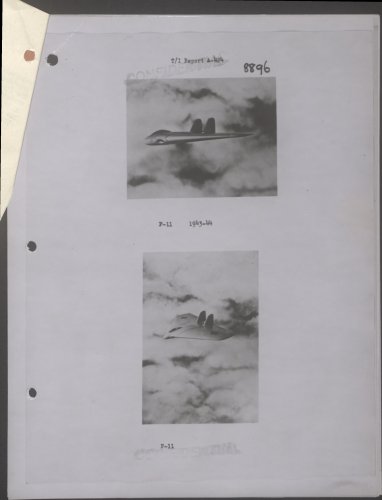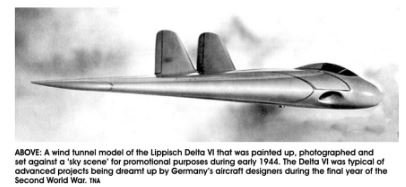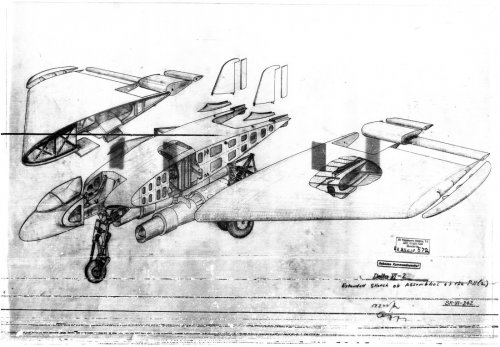Avimimus said:
Didn't about half of Lippisch's team disappear enroute to relocating away from the advancing allies (going off of memory here)?
Lippisch's own account of how he got his documents - and possibly that little model - out of Vienna, from his book Erinnerungen (please excuse my poor translation):
After the fronts became closer and closer to Vienna, and finally the eastern part of Vienna was already in Russian hands, it was high time to transport my employees, partly with their families, to the West so that they would not fall into the hands of the Russians. We brought the families together with assembled transport columns, and only a few closest collaborators and myself sat in the empty house, in which we lived in the west of Vienna.
By chance, I heard from a communications post stationed on the main street in front of our house that the Russian tanks had meanwhile broken through the Vorgebirge, the Wienerwald, and were on the way to cut off the remaining path of retreat to the west. The wood gasifier (we were driving the cars with wood gas) was quickly heated, and we four last members of the LFW set off in the direction of the next village of Purkersdorf to drive from there over the mountains to St Pölten.
It was in the middle of the night, lights could not be shown, and so we drove into the seemingly completely deserted Purkersdorf, in which only a German post guarded the crossing in the market square. The guard stopped us and asked where we wanted to go. He said that we should try to get on as fast as possible, for we could already hear the revving of the Russian tanks, which entered the village of Purkersdorf from the other side, and there was a long, straight line up the exit of the road, a meadow, without any visibility from the other side. As it usually did on such occasions, the wood gasifier stopped in the middle of this long, straight stretch. We had kept a litre of gasoline in reserve in a special tank for the biggest emergency, and I think we have never changed the carburettor so quickly to this petrol supply.
After the car started to our great fortune, we were able to put the second stretch of the long straight behind us and escape from the village of Purkersdorf in a right curve of sight. The Russians from their tanks undoubtedly saw this operation on our part in the gloom of the night light, but they were probably of the opinion that it was a Russian vanguard, for this boldness on our part was beyond belief. So we arrived in the morning first to the airfield Tulln, on which one of our family transports had remained stuck. The commander of the airfield was a good acquaintance of mine and we agreed that he would still provide us the necessary gasoline while we took another transport van from him.
So we went on in the direction of the small town of St Pölten, where some of the remains of our institute were left behind. But the road there was filled with military vehicles, moving at a rather slow pace. In between, I was with our vehicle, which had once again been converted to wood gas, and peered in vain for a gap in order to advance faster. My eyes fell on a field of wheat, which extended on the left side, that is, to the south.
It was not very difficult for the eye of an old infantry officer to realise that in this wide field a Russian outpost reconnaissance tank was operating, which watched over the removal of the equipment and men from the airfield of Tulln and passed word of it on to the tanks. It could only be a short time before this road with its many vehicles were taken under fire and what would happen next, one could easily imagine.
Fortunately, I had explored this area variously to carry out test flights, and so I turned off the road in the north direction to reach an old road that led west along the Danube. In this way we reached the village of Ottwang, without the enemy's interference. The owner of the house where we stayed had a nice business and a wine-cellar. Thus, after all the adventurous driving, we came to a good Austrian dinner with a glass of the most beautiful Danube wine, and sat there drinking around this nicely decorated table, as if there were nothing more peaceful in the world than this evening table.
We had long since become accustomed to the fact that life at that time consisted entirely of complete contradictions, and we soon learned to enjoy the moment which might perhaps turn into a catastrophe within a very short time.
Finally, we had to say goodbye to the good food and the beautiful Danube wine and take the road to St Pölten. The landlord gave us the good advice not to drive first to the main road through the village, but directly along a forest path, to which its property bordered, since we would reach the main road anyway. But it had already become a little dark, and perhaps the good Danube wine had its effect. In any case we have never reached the main road, but have travelled from one forest road to another in this increasingly dense forest, until finally we meet a military vehicle with two German officers who had a map.
They gave us well-meaning advice not to go further west. After we had covered
the large trailer in which the secret files were placed with one of my most beautiful Persian carpets, and then my lute was strapped on, we were able to reach a village in which some other vehicles had sought shelter.
We joined them in the cars around the market square, around a rippling fountain. Very soon our samovar, which of course we had also taken, was filled and heated with wood. We even had a breakfast with coffee and oatmeal. We drove on freshly and cheerfully to St Polten, as if we had driven very quickly from our Viennese house.
Since St Pölten had a wide view over the mountains lying in front of it, it was not difficult to find out that the Russians were already there. Thus the men in St Pölten, together with their families, were ready to put sack and pack together in order to get down to the West as soon as possible.
Since we already had a little more experience in this endeavour, and the good Danube wine, from which we had taken a bottle, our nerves substantially calmed down, we set up an evening picnic in the factory, which had previously produced aircraft parts for us, spread our beautiful Persian carpets, brought our samovar to the boil, tuned the lutes and thus experienced a pleasant and quite cozy evening, not too far from the Russian front, but far enough to be able to make up for a bit of sleep.
In the factory they had even larger vessels with acetone, which was used to paint the aircraft parts. The fact that this acetone was also used as a motor fuel, we had pointed out in a very short time. And so we could continue our journey with acetone as a fuel. We left behind a peculiarly fragrant smell, as one says in the hunter's speech. Although the acetone did not dilute the engine oil to the advantage of the engine, but if you did not get any petrol, engine oil was still to be found at most petrol stations.
So we drove from St Pölten in the direction of Steyr through the beautiful Austrian landscape. What spoiled this beauty, however, was the presence of the American two-engine reconnaissance aircraft, which had soon spotted this incredibly insolent private car, which was driving through the countryside, and kindly took our vehicle under fire. So we always had one who had to watch the sky and give us a warning sign at an early stage. Then we drove the car into the scrub and looked for some protection even in the road ditch. That worked very well, because either the Americans could not shoot so exactly, or we could better hide our car. In any case we have come without damage to Steyr. There we were then told we had to go through a prolonged procedure on the military mayor's office to obtain the permission to drive further west. This did not sound very trustworthy, and as a side road led us to the mayor's office, with cunning we got out of this investigation, and finally arrived at Prien on the Chiemsee, after all the other experiences which can not be described. Our families were very needy but in the long run Prien did not have any reserves.
The German members of my Viennese workforce had gathered in an emergency camp near Bad Ischl, and I joined them after my family had found accommodation with friends at the Traunsee. The war was not yet over and we were between the fronts. But the American troops advanced quickly and overran us a few days before the truce was declared in early May 1945. Now it was possible for most of my employees to return to their German homes. My family and I moved into a tiny hut above Strobl on Lake Wolfgang, uncertain what the future would bring us.

